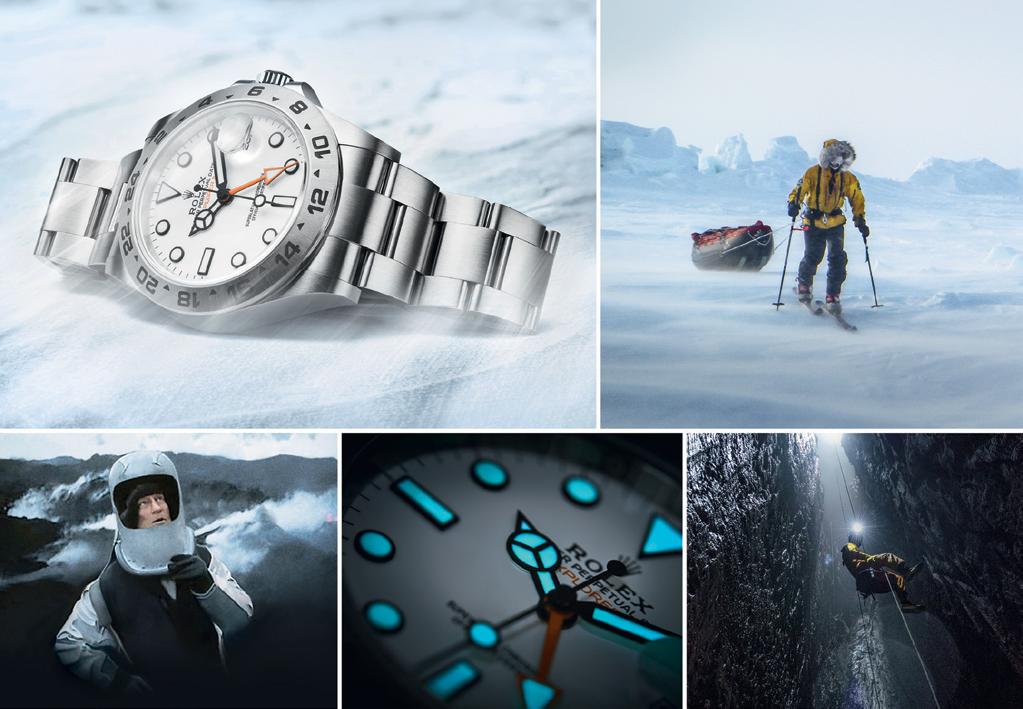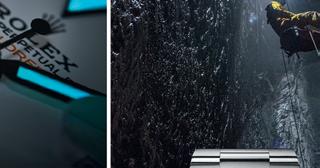













With this issue of SKIPPER, I think it's fair to say that there is a lot of focus on the Rolex Middle Sea Race – and rightly so – it is one of the most highly regarded offshore races among the international sailing community.
Even if you're not part of the sailing community, the likelihood is that you've heard of the race and may have even enjoyed the spectacular view of the boats leaving from the Grand Harbour as they set out on their journey, all hoping to be able to claim one of the coveted trophies.

There is a lot of information about the race available from different sources. However, Peter Valentino's roundup of insights and information about the race from a behind-the-scenes point of view is a fascinating read that most of us wouldn't usually have access to.
Another interesting read is a tell-all interview with Michael Mifsud, general manager at Yachting Malta and president of the Malta Sailing Federation – about the tenacious and enterprising project of investing in a Cookson 50, aptly named Viva Malta. Part 2 of the same duo delves into the work behind setting up the first-ever Maltese Paralympic Sailing Team. This great decision shows that sports should be open to everyone and makes it possible for people with physical or mental disabilities to still be a part of the sailing community and enjoy the benefits of the sport.
Although the weather has remained warm well into November, the idea of heading to a tropical paradise for the winter months is always an exciting prospect, so we highlighted four winter destinations that are ideal getaways.
And for those of you who are seeking more than just a holiday, you could follow in the footsteps of those yacht enthusiasts who embark on private expeditions to discover the secrets of the ocean that they have loved throughout their sailing lives. These private expeditions provide us with answers related to medical advancement, ecological development, and a glimpse into remote areas of the world that the regular traveller unfrequents.
As most boats leave the water for their home on land to get some much-needed maintenance and TLC, this magazine will keep you company during the winter months and anticipate what's on the horizon in the sailing community.


Skipper is exclusively distributed at the Grand Harbour, Kalkara, Manoel Island, Marina Di Valletta, Mgarr, Msida & Ta’ Xbiex (Creek) and Roland marinas. All boating and sailing outlets, foreign embassies, all five star hotels’ waiting areas, business centres and executive lounges, sailing clubs, Portomaso and Tigne Residence.
Editor - Anthony P. Bernard anthony@bemags.com
Yachting Editor Peter Valentino

Consulting Editor Georges Bonello Dupuis Design Bloom Creative bloom@bloomcreative.com.mt Print Print It Distribution JD Distributors
Promotions and advertising contact Be Communications Ltd., on (+356) 2134 2155 or hello@skippermag.com

FACEBOOK-SQUARE
Skipper is published by Be Communications Ltd., No. 81, Howard Street, Sliema SLM 1754, Malta
FACEBOOK-SQUARE LINKEDIN · becommunications.com
All rights reserved. Reproduction in whole or in part is strictly prohibited without written permission. Opinion expressed in Skipper are not necessarily those of the editor or publisher. All reasonable care is taken to ensure truth and accuracy, but the editor and publisher cannot be held responsible for errors or omissions in articles, advertising, photographs or illustrations. Unsolicited manuscripts are welcome but cannot be returned without a stamped, self-addressed envelope. The editor is not responsible for material submitted for consideration.






If the Rolex Middle Sea Race in 2021 provided once-in-a-lifetime conditions that propelled the fleet to breathtaking speeds and course records, this year's race was a stark contrast.

I started to write this piece approximately a week before the start of the Rolex Middle Sea Race, I wrote a bit during the race itself, and I completed the last bit in the week after that – I think I've now heard it all, weighed it all out, and voila – a bit from the past and more from the current. Peter Valentino continues.
CANTIERI RENIERThe origins of Renier go back to the 1980s shipyards in Palermo. Luigi Renier began his career in the boating industry early, gaining experience and exposure to boating assembly, testing, and design.
Last September, Europe's largest on-water yacht exhibition returned, and Skipper picked the top of the crop from the 2022 Cannes Yachting Festival
Before customs may release imported products into free circulation, VAT and import charges must be paid.
There's nothing like setting sail during the cooler days when the nights grow a little longer and summer is another six months away. Yet again, the autumn and winter sailing locations are just as excellent as the ones you can visit in the summer.
Most yacht enthusiasts have grown up with a deep love for the ocean and all the secrets it contains, and as they've moved into adulthood, that affection for the sea hasn't waned.
The new Karnic S37x is a hardtop sports cruiser design based on a 10m hull. The new sports cruiser will be Karnic's new flagship yacht, with all the features that any boat owner could want.
THE ALL-ELECTRIC BMW i 7 IS THE MOST POWERFUL 7 SERIES EVER PRODUCED
BMW is proud to announce the all-electric BMW i7, the latest addition to its model family.
In this two-part interview, Peter Valentino talks to Michael Mifsud, general manager at Yachting Malta and president of the Malta Sailing Federation, about the Viva Malta project and Paralympic sailing.

Skipper sails the sea of fashion.
For several reasons, yacht design in 2022 has come so far from the early days that it’s nearly impossible to compare an old yacht with a new yacht.
Endlessly inspired by strong women who adapt effortlessly to the many roles required of them, Laura came up with Eclectic, a jewellery boutique to showcase her favourite designers' one-of-a-kind pieces.




If the Rolex Middle Sea Race in 2021 provided once-in-a-lifetime conditions that propelled the fleet to breathtaking speeds and course records, this year's race was a stark contrast. Crews demonstrated significant patience and perseverance in maximising every opportunity to maintain momentum in the face of brutally light winds.

Offshore racing is inherently unpredictable. The nature of the examination varies by race. The Rolex Middle Sea Race is never guaranteed. This year, in particular. Provisions were stretched, fortitude was put to the test, and hopes seemed to fade at times. Overcoming these numerous obstacles requires the deployment of vast reserves of skill, endurance, and collective teamwork. Rolex's association with offshore racing, particularly the 600-nautical mile discipline, has long been linked to the exemplary display of human endeavour. This year marks the twentieth anniversary of Rolex's sponsorship of the Rolex Middle Sea Race and its organisers, the Royal Malta Yacht Club (RMYC).
Emerging victorious as overall race winner from the 118 entrants representing 24 countries, and in such an exacting edition of the race, was Eric de Turckheim's French yacht Teasing Machine. After coming close to victory at several Rolexpartnered offshore races in recent years, this triumph resulted from persistence and a passion for continually improving. As de Turckheim explains, "It is a huge emotion for my team and me to win the Rolex Middle Sea Race. It wasn't easy due to the very light winds.
The secret of winning this race is having a team experienced in winning in conditions like this. It is a very technical race, probably the most technical of the 600 nautical miles."
The Rolex Middle Sea Race's 606-nm (1,122 kilometres) racecourse's many corners and turning marks introduce constant navigational challenges. Starting and finishing in Malta, it encompasses an anticlockwise circumnavigation of Sicily, a myriad of islands and two active volcanoes. One error or misjudgement can have marked consequences on such a challenging course. As de Turckheim continues, maintaining this focus is essential, "You have to keep your discipline and not make mistakes. Like in any sport, you can be the best, but make a mistake and you pay. Sailing is a great sport because it teaches you never to be arrogant."
Proving decisive for Teasing Machine was the long stretch along the north coast of Sicily where she led her pack of rivals, a position she successfully defended despite the constant confrontation with patchy winds. As Teasing Machine tactician and navigator Laurent Pagès explains, this involved taking calculated risks, "The time of day or night that you arrive at the critical points affects the angle of approach to make the best of the wind and current. This race creates a need to analyse a great mix of information. You need to know how your boat will react to specific situations. Sometimes, you have to make radical calls in this race because taking a conservative decision does not always work."
›
For the yachts, still out at sea and unable to better Teasing Machine's corrected time, the focus turned to the simple ambition of finishing the race. Retiring may have been tempting, but by the final prize-giving, 13 yachts still had to finish the race.



For the frontrunners, elapsed line honours times were significantly slower than last year. The 100-ft (30.48m) Maxi Leopard 3 (NED) secured the monohull title in over 70 hours. Over 30 hours outside the record set a year earlier. Mitch Booth called tactics on Leopard 3 this year, having skippered the recordbreaking monohull Comanche in 2021.
He was well positioned to reflect on two very different races, "Every single time, the race is different. This year was a very tough race and extremely challenging. Not because there were strong winds (like in 2021) but because there were a lot of obstacles. The team did such a great job. This race is one of the iconic offshore races. In the Mediterranean, it is the pinnacle." The multihulls offered the most gripping finish.
Teasing Machine at startline Artie at startline David Cremona and Malcolm Lowell with the overall race winner Eric de TurckheimArriving a little over nine hours (on elapsed time) ahead of the fastest monohull, Riccardo Pavoncelli's Mana(ITA) crossed the finish line off Valletta a mere 54 seconds ahead of Zoulou (FRA). After more than 60 hours of sailing over 600 nautical miles, the margin is remarkable. An incredible display of the competition is reflected across the fleet.
During today's final prize-giving, RMYC Commodore David Cremona paid tribute to the competitors, "This edition of the Rolex Middle Sea Race was certainly very different from the last. To those still sailing, we commend their perseverance, and to those who finished the race, we congratulate them on a momentous effort."
Finally, the 43rd edition of the Rolex Middle Sea Race will be remembered for the spirit that prevailed in the face of challenging weather conditions. An emphatic demonstration of an unwavering commitment to upholding the race's finest traditions while overcoming the vagaries of the wind, waves, and sea.

around 5 miles off Malta

I started to write this piece approximately a week before the start of the Rolex Middle Sea Race, I wrote a bit during the race itself, and I completed the last bit in the week after that – I think I've now heard it all, weighed it all out, and voila – a bit from the past and more from the current. Peter Valentino continues.


Let's face it, the vast majority of sailors worldwide and their families know the history and narrative of the Rolex Middle Sea Race just as well as the story of the nativity is known to the billions of Christians around the world. The race is a "household name", so I'll leave the repletion of all its attributes and credentials to others to write about. In any case, you can find multiple identical write-ups online. The 2022 edition is a testimony to the forgiveness of sins shown by the sailors that took part in the ill-fated 2021 edition, which, as a reminder, saw the top prize go to a Russian boat, leaving many still wondering why and how come. Mystery
surrounds this phenomenon, and time will reveal much more than what we know today.
Last year's race officer suffered the brunt of it when someone else should have participated too, but as the saying goes, the race officer got "thrown under the bus", and the person who really should be hiding is still on the forefront. The race officer chose to go down alone; however, he is still in a position to name and shame those who made sure certain decisions were taken. Thankfully, from what I know, the commodore is well-briefed and sees things miles before they surface. It was suggested
by those responsible that a new race officer and a race director would be brought in, and this happened. Just as it ought to be, the race committee will be autonomous, and nobody with influence will be able to dictate from above, as they did last year. The race committee isn't just a group of elderly adults who strike and remove flags while wearing t-shirts that look like billboards. They should be the brains behind the race and control it from its inception. They should write what ought to be flawless documents, take responsibility, be fair and organised in every way, and do their best to ensure that every boat is awarded the
Photographs by Kurt Arrigo / Rolexprize it ought to receive. They're known for taking decisions without prejudice, affiliation, or succumbing.
The latest update from the organising authority shows a solid entry of circa 120 boats from 25 nations. However, none of last year's participants had forgotten (the finish line debacle). Many have spoken to me at length over the year, and they all forgave, which is good. For some reason, they (the organising authority) keep referring to the word "yachts" instead of boats. It's a mighty figure, and I read it this way mainly because we're just out of a pandemic that's beginning to raise its head again, we're in a war that has been inflicted upon us by a madman, and we're facing an
possibility that some will consider taking up residency here, others explore incorporating a company, and those contemplating registering their boat under our robust flag. Then, let's imagine what visibility Malta gets, year after year, indeed, through this race. It's a race that showcases Malta, our various industries, financial services and opportunities.
However, I wish to see another change: the appreciation, the gratitude towards the smaller boats. Numerically, they form the most significant part of the fleet, and they're the ones that endure the most, the ones that at times barely manage to form a crew; yet, they show up in great numbers year after year. The limelight they enjoy is in the few minutes after their start, which is usually the first in a series of starts. They then get forgotten, and this has happened year after year. They hardly feature photographically, the owners are very seldomly interviewed, and it's just a pity because they're the heart and the essence of this race. Remove them, and the race would be much smaller. So please, dear colleagues, consider this and give them the light they deserve.
The big boats, which are the first to finish, get welcomed, not grandiosely, I may add (it's something that the RMYC ought to improve upon). Six hundred and seven miles of what generally is arduous sailing to be met by a photographer, a bottle of something to the first boat in and not a sign of any comfort food. It's an exercise that the club isn't keen on. Indeed, the club should warmly welcome every boat that completes the course – it's one thing that the club, as an organising authority, should do out of respect for the sailors and the sport.
unprecedented global recession. Participation in this race costs local boats in the thousands – imagine what it costs foreign boats; so every entry is one that Malta ought to be thankful for and to.
Thankful because they automatically become ambassadors of our tiny island in many ways. There's a limit to how much sun and beaches Malta can advertise, but imagine a boat that sails to Malta well ahead of the race, gets dry berthed at one of our yards, gets maintenance work done, uses accommodation and other services like car hire. Let's consider the
Moreover, it's one of the Races that enjoys the support of the Royal Ocean Racing Club, which is why Rolex sponsors this event. Thank God for that; otherwise, the organising authority risks repeating inevitable "slip-ups".
Let's be clear: if the RORC pulls back, the RMYC can probably kiss the sponsor goodbye. The sole interest of the RORC is to ensure that everything is done by the "Rules Book" in the interest of fair sailing. That the event is compliant in every department, and nobody's spirit gets tarnished due to negligence or ignorance.
I remember that in what I call the first Middle Sea Race of the modern era, not yet christened "Rolex", my late father, brother and crew members raced aboard the smallest boat in the race, a Beneteau 32s5. Racing alongside, then, was Alexia B, an 84' super-fast boat owned by Alberto Roemmers Sr, who sadly passed away a few months ago. Alberto wasn't only a good sailor but a gentleman of times gone by. My brother finished the race in the very early hours of the morning, at about 3am, about two to three days after Alexia B had crossed the finishing line, and yet, Alberto stood on the pontoon in a gentle, unassuming manner, accompanied by two helpers and a few bottles of champagne. Alberto being Alberto, champagne glasses and bites to eat. A warm welcome indeed. That's how it should be! ›

Bar a couple of hiccups; this Rolex Middle Sea Race edition was an absolute success.
As we all know now, this race was one of the lightest ever. A lesson to many that tacking in light air in search of the wind doesn't pay off, not when there wasn't the slightest of breezes. A lesson learnt that food and water aren't an extra. Not carrying enough is negligent. It's dangerous.
Annus horribilis x2
October is meant to be the best month for the RMYC, but last year and this year didn't live up to expectations. Last year's Rolex Middle Sea Race was scandalous, and the timing of the Appeals Court decision regarding the eviction of the RMYC from the "dinghy park" was certainly not what the RMYC was looking forward to. The story of what happened is all online, and you can all, members especially, make up your minds. This information may guide you on who you'd like to vote for in the next committee election. So read, don't just listen.
Back to the Rolex Middle Sea Race, because that's really what this piece is on – the morning of the start was silent, and Aeolus remained fast asleep for a whole week. We all knew
that. The first good decision was removing the obligation for boats to pass and around inflatable marks, usually part of the course and set out at sea on the Sliema front. A technical decision, an excellent call and at least as soon as boats crawled out of the harbour, they could take their preferred route to Sicily without having to sail in a direction that would slow them down and cause congestion around the harbour mouth and the marks.
The second good decision was to keep the groups of boats that weren't about to start far away from the starting line. That helped the little wind there was to sort of infiltrate. The third good decision was to get the show on and get started.
It was a very sluggish race, that we all know, but certainly not uninteresting. I followed the website and noticed that the RMYC still need to handle one particular report of alleged misconduct by a sailor. The jury couldn't hear this since the sailor claimed he wouldn't be in Malta before Monday, two days after the prizegiving.
Somebody I know swears that the sailor was, in fact, in Malta. So it is up to the RMYC to reconvene the international jury, which can be
done over the internet or to appoint a new jury, first to decide if Rule 69 was possibly broken and, secondly, to set a date for the actual hearing. All I can say is that the allegation of breaking Rule 69 isn't anything to be proud of. Now, it's in the hands of the RMYC, and I hope they'll do something about this within the time limit; otherwise, I will be the first to say that the RMYC is protecting one of her members in the dodgiest of manners.
The next question mark is that one particular boat didn't receive the prize they ought to have received at the time, and another prize that was meant to go to them, mistakenly or not, was awarded to a competing boat.
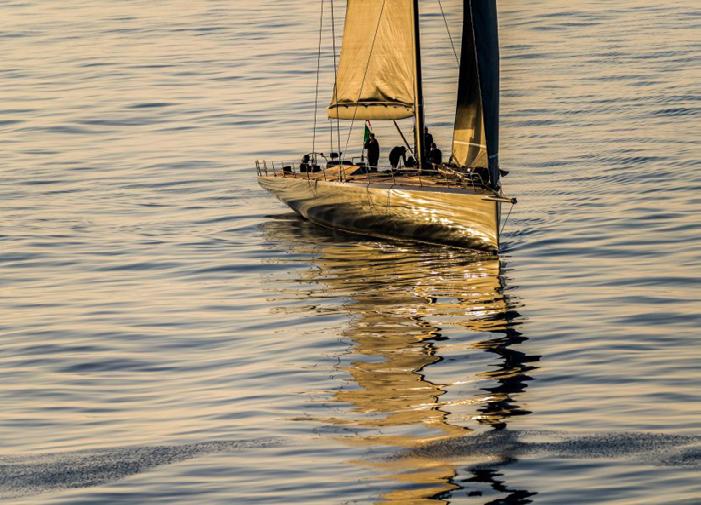
Again, this pivots around a very nationalistic trophy, one awarded to the boat with most of its crew being Maltese nationals. I never liked the scope behind the trophy. It was just like a justification that would enable a Maltese boat to win a prize, no matter what. Over the years, I suggested that this trophy gets struck off the list, but it's in the hands of the RMYC to decide. From what I heard, yes, the organising authority likely misinterpreted the narrative of the trophy. Luckily, Rule 90, which the RMYC refused to adopt last year, can be helpful in this instance. Getting it right is crucial because not correcting the possible wrongdoing leaves much to be desired.
Again, bar a couple of hiccups, this Rolex Middle Sea Race edition was an absolute success. I encourage humbleness, a touch of humility, rejuvenation and the building of bonds with those who matter to the club year-round and the appreciation, mention and inclusion of the "smaller boats".
On behalf of our readers, to all the sailors, may this be remembered as one of the best races you ever sailed, not for seagoing abilities, of course! To all the officials, carry on to hold your course and maintain your righteousness; to all the volunteers, keep doing what you do with a genuine smile, and if you have to go out of your way to help, please do. You are the people that sailors remember. I wish the RMYC every success in its rejuvenation, keeping tradition in mind whilst embracing changes in the right direction.



The origins of Renier go back to the 1980s shipyards in Palermo. Luigi Renier began his career in the boating industry early, gaining experience and exposure to boating assembly, testing, and design. Throughout the early 2000s, he partnered with renowned shipyards, creating his first designs and concepts.
Between 2011 and 2012, the first construction began, aimed at acquiring full knowledge and understanding of building the first production model. The knowledge acquired, combined with Luigi Renier’s vision, resulted in the creation of the R Project, launched in 2014.
The R Project included the entirety of the boat. Its structure, navigability, finishing, quality, and attention to detail.
Following months of meticulous design and model development, they launched the first R9
prototype in July 2014. Since then, the company has developed several stunning new models and product variables. In 2018, the R6 model was introduced, a boat that redefines the concept of space on boats of this size.
In 2019, the R8 Tourer, R8 EFB, and R9 Tourer were launched and presented at the Cannes Boat Show.
In 2021, the new R11 flagship model was presented at the 61st Genoa Boat Show; in September 2022, the R12 was also revealed at the Cannes Boat Show.
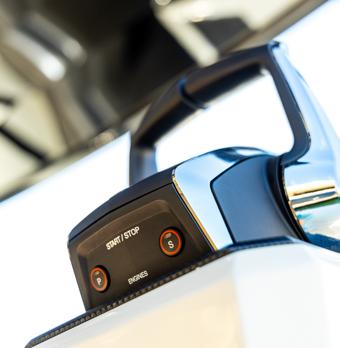
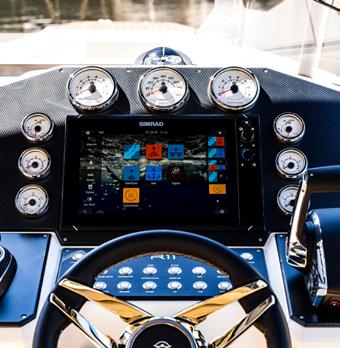
The R12 is considered the top-of-the-range Renier, representing the perfect synthesis of commitment, combining style, performance, navigation, and comfort. The aft cockpit offers a comfortable living area with two opposing L-shaped sofas with removable tables, leading
to the large aft sunbathing area, divided by a central walkway covered in teak.
Nothing is left to chance as all spaces on board are divided and exploited in the best way. The functional aspects are combined with a distinctive design, resulting in a unique boating experience.
This combination of experience, passion, planning, use of 3D programmes, and subsequent numerical control milling of the models has meant that the Renier product line of boats built has a unique identity, style, comfort, and best drivability.
Cantieri Renier is represented in Malta by Motors Inc. Marine, Mdina Road, Qormi, Malta. For more information, please contact [+356] 2269 2000, marine@motorsinc.com.mt, or go to www.cantierirenier.com.

In this two-part interview, Peter Valentino talks to Michael Mifsud, general manager at Yachting Malta and president of the Malta Sailing Federation, about the Viva Malta project and Paralympic sailing.

The phrase 'National Sailing Team' is generally ascribed to dinghy or Olympic Classes. Coincidentally, it took Malta years to aspire and build an Olympic Sailing Team due to past acrimonious misunderstandings between clubs and the lack of funds. However, Malta recent extended the National Sailing Team to Offshore Sailing with great might. Yachting Malta under the chairmanship of John Huber and with the insistence of Michael Mifsud, its general manager who also heads the Malta Sailing Federation, purchased a Cookson 50 to act as our National Offshore Sailing Boat. A sharp and bold undertaking.
Huber has since resigned as chairman, and on behalf of our readers, I'd like to convey our heartfelt gratitude for all he accomplished during his term, which will be remembered fondly by many, both in sports and the marine industry.
Having sailed a Cookson 50, I can describe this Bruce Farr and Mick Cookson project as fascinating. The Cookson is lovely to look at,
and she's fast, has a racing character, and is built to withstand whatever offshore racing will throw at her – so if she's in the right hands. She outshines many in the marinas, and amongst the closest you can get to a mini maxi, she begins to show off as soon as the sails are set.
Today's interview is with Michael Mifsud, and whilst thanking him for his time as well as for taking this interview, I'd like first to ask him to reply to our questions wearing both hats, that of general manager at Yachting Malta as well as president of the Malta Sailing Federation.
Michael, most of the questions we prepared for you stem from comments that reached us from sailors, and it's what the Spanish refer to as the 'radio pantalon' or the pontoon radio. Added, of course, is our own, all in the interest of bringing this project to light. Why a Cookson?
When the idea was first hatched, we started with a clean slate and looked at numerous boats, but we eventually developed a matrix to
assess the pros and cons of the candidates. The primary requirements were: carbon build, canting keel, an offshore capability and reduced crew size.

We considered many models, and each had its attributes, but there was one boat that all the technical committee members agreed on, and it certainly was the Cookson 50. If I may, I would like to quote Sailing Anarchy on the attributes of the Cookson 50. "Sometimes when a designer draws a boat, they don't just get it right, they get it very right." That is most certainly the case with the Cookson 50.
Is she modified in any way, or is she the standard Cookson?
She has had some upgrades, including a longer fixed bowsprit and a canard. In addition, she has been repowered with a new Yanmar engine since the engine operates the "PTO" that operates the canting keel and the primary winches. But, apart from these minor upgrades, she is a standard Cookson which needs very few upgrades to shine.
Was this purchase an ambitious move, and how do you look at this as a project?
Needless to say, it was an uphill struggle, but we firmly believed in the project and kept hammering until our message went through. We look at this as a combined national project that looks at this endeavour from different angles. Our prime objective is to allow our sailors to race in some exciting offshore venues. This has the added advantage of showcasing not only our top and upcoming talent but our offering in the Maritime field, including our ship registry, our yacht facilities and our country and waters as a cruising destination. The possibilities are endless, and we are working towards maximising the fruits of this ambitious venture.
The Mediterranean is full of boats for sale, some of which are advertised at advantageous prices and in uncomplicated purchase and delivery. Can you kindly explain to our readers why you purchased from half a world away?
Once we had decided that the Cookson 50 was the boat that fit our project, we looked for one that fit our budget and was available. One that would have been available in the Med would have made our life easier, but taking the easy way out is not our style. The boat we purchased became available after its owners were locked
down in Australia away from their boat for over one year, and we took this opportunity to negotiate favourable terms. Dealing with a yard at one end of the globe and an owner at the other end was a nightmare to our sleep patterns, as were the walkthrough surveys etc.
The delivery was complicated but, as we can see, doable. In offshore racing, boat logistics will be part of our struggles, but we are sure that we can achieve much with a good team.
How was the boat delivered, and then, once she reached Malta, what happened next?
They first prepared the boat for the trip at the Hinckley Yard in Rhode Island, following which they trucked it down to Port Baltimore. Some specialist truckers haul similar boats and dealing with a professional meant that they handled all details well.
This included passing through five U.S. states and different requirements for haulage times, police escort etc. From Baltimore, they shipped the boat to Antwerp and then to Salerno in Italy. From Salerno, it made its last leg to Malta. Throughout this transit, we followed and tracked the boat continuously. ›
We understand that she costs around €400,000 – how can you justify such an expense, especially knowing that she will possibly cost the taxpayer €50,000 per year to maintain and race? Are you open to sponsorships?
You understand well that she costs around €400,000 and that it is an asset that will be converted at the end of the project. Regarding the annual running cost, your calculations are conservative. While a local Corinthian crew will crew it, there is a substantial expenditure in travel and accommodation costs, registrations, maintenance, insurances etc. We are very open to sponsorships that share our visions and are aligned with our goals.
Exactly who's eligible to sail and race this boat?
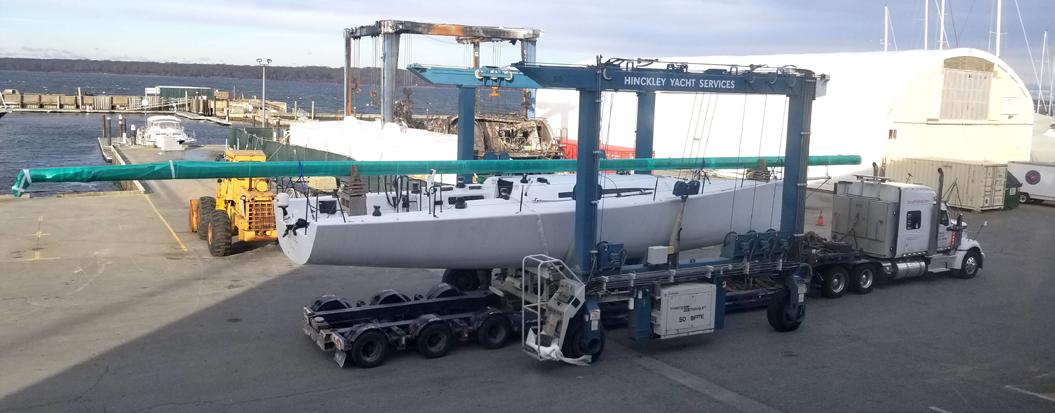
All sailors, members of an MSF-affiliated club or association with some offshore experience, and over eighteen are eligible to participate. The MSF has already received applications from interested participants, and the feedback is very encouraging. Therefore, applications will remain open, and we are trying to be as inclusive as possible.
Can you share your racing calendar plan, or is it too early?
We plan to start with a year of Mediterranean
circuit and to consider and evaluate the possibility of a second Mediterranean circuit halfway through the season. Plans are that the boat starts racing in April 2023 and have the schedule out in December 2022 to facilitate sport leave applications from athletes.
As you know, I carry quite a racing and event curriculum, and I know just how attractive Malta is to numerous foreigners. I used to be asked ad hoc questions about investments, insurance, banking, financial services and more. I informed the government of this many times around.
Yet, of course, they who need to be obeyed were never receptive to government; having a once yearly appearance at the Monaco Boat Show was sadly enough. So, I don't anticipate the team having the time or understanding the potential to respond to inquiries. Nevertheless, I'm recommending that the boat should have some land-based representation, a spokesperson to travel with and accompany the crew, capable of responding to, at times, pertinent queries. Does this fit in your plan at all?
I think that if the project is to be successful, this ambassador will be a necessity. It will add so much value to the project and endeavour that I cannot see it being done without. Having said that, we have not drawn up a proposal for this roving shop which is a project within a project.
You christened the boat Viva Malta a cheerful name, and we Maltese can refer to Viva Malta as the post-independence easy to sing along song (1967) that gave the Maltese courage. Why, however, did you choose Viva Malta as her name?
Mea culpa! When the board started discussing a name for the project, a name was the last thing I had on my mind. During the peak of the COVID-19 pandemic and seeing the resilience and fortitude of the Maltese at times of hardship, the song and then the name came to mind. So, I mentioned the name in an informal conversation with John Huber, who immediately liked it and proposed it to the board. I think the song is very patriotic while being easy to sing. I think we will be able to build a brand around it, and it will be something of a legacy that will inspire those that will follow us.
Michael, on behalf of Skipper magazine, I thank you immensely, and I'd like to invite you to close this interview with anything you deem pertinent to Viva Malta.
I want to stress one significant point about the Viva Malta project: it is our project; all of us, whether we are sailors, supporters or administrators, this is our project.
We must keep it this way, to make it as inclusive as possible, so every one of us is proud of his involvement in it. Viva Malta!!!

In this two-part interview, Peter Valentino talks to Michael Mifsud, general manager at Yachting Malta and president of the Malta Sailing Federation, about the Viva Malta project and Paralympic sailing.
The first introduction to sailing as a sport for people with disabilities happened around fifteen years ago. The person who not only invited me to an event but also encouraged me was Greece's top international judge, Costas Tsantilis. For instance, I had previously encountered sailors with disabilities at Olympic events during the Hyeres Olympic Sailing Week. Still, I had never, till then, gone to such a standalone event.
The first event was eye-opening because I quickly realised that anyone with a disability doesn't need special treatment; they need something simple: access. Give them that, and they'll see the world. Throughout my time as an international judge, I accepted all the
invitations to officiate at such events. Indeed, there were times when I turned what seemed to be high-profile events down because I thought it was more important to be at events for people with disabilities. These, to me, restored humanity, and they just dispersed courage. I can write "ad nauseam", but the scope of this piece isn't about what goes on at events. Years ago, I wrote an article in The Times that captured considerable attention and interest. I actively spoke to politicians about the need to implement sports for people with disabilities. Years later, and I still hope that I can still claim some influence in the process of this undertaking, I recently learnt that Malta is now offering people with disabilities the chance to practise and enjoy the sport of sailing.
We decided to interview the president of the Malta Sailing Federation, Michael Mifsud, who also wears the hat of the general manager at Yachting Malta. This entity also takes a genuine interest in sailing for people with disabilities.

Michael, by whom and how were you first introduced to Paralympic sailing?
John Huber, ex-chairman of Yachting Malta and a friend who, very early in my days at Yachting Malta, said that one of his primary wishes was that Paralympic sailing is introduced in Malta. I corresponded with World Sailing, who directed me to Massimo Dighe, who at the time was Parasailing Manager at World Sailing. Incidentally, at around the same
time, John and I were at the Lega Navale in Syracuse, and the president of the Italian Hansa Class Association, Carmelo Forastieri, invited us to send a Paralympic sailor to the Hansa World Championships in Palermo later that year. All the directors at Yachting Malta immediately supported this concept, and our first Paralympic athlete, Gianluca Aquilina, was the first Maltese Paralympic sailor to complete a World Championship event. I cannot describe our pride at this event.
You discussed this at many levels—can you tell us more, please?
I discussed the matter initially with the board at Yachting Malta, and they immediately accepted
the concept. Following this, we discussed the subject at the council of the Malta Sailing Federation.
Again, there wasn't one ounce of opposition to the proposal. I followed up the discussion with Catherine Duncan at World Sailing, who invited me to a Paralympic Development Programme in Oman. This programme, run by Rob Holden, was an eye-opener, and many aspects of Paralympic sport and sailing were discussed. Parasailing sailor Bernard Destrube also guided me through the first classification steps and was very helpful with his advice. Finally, Massimo, who also addressed the programme, was very welcoming and excited that Malta was joining the parasailing fraternity.
Paralympic sailing, like any other Paralympic sport, targets people with physical disabilities. However, since the boats Yachting Malta has bought are convertible to double-handed crafts, people with intellectual impairment can also experience the joys of sailing.
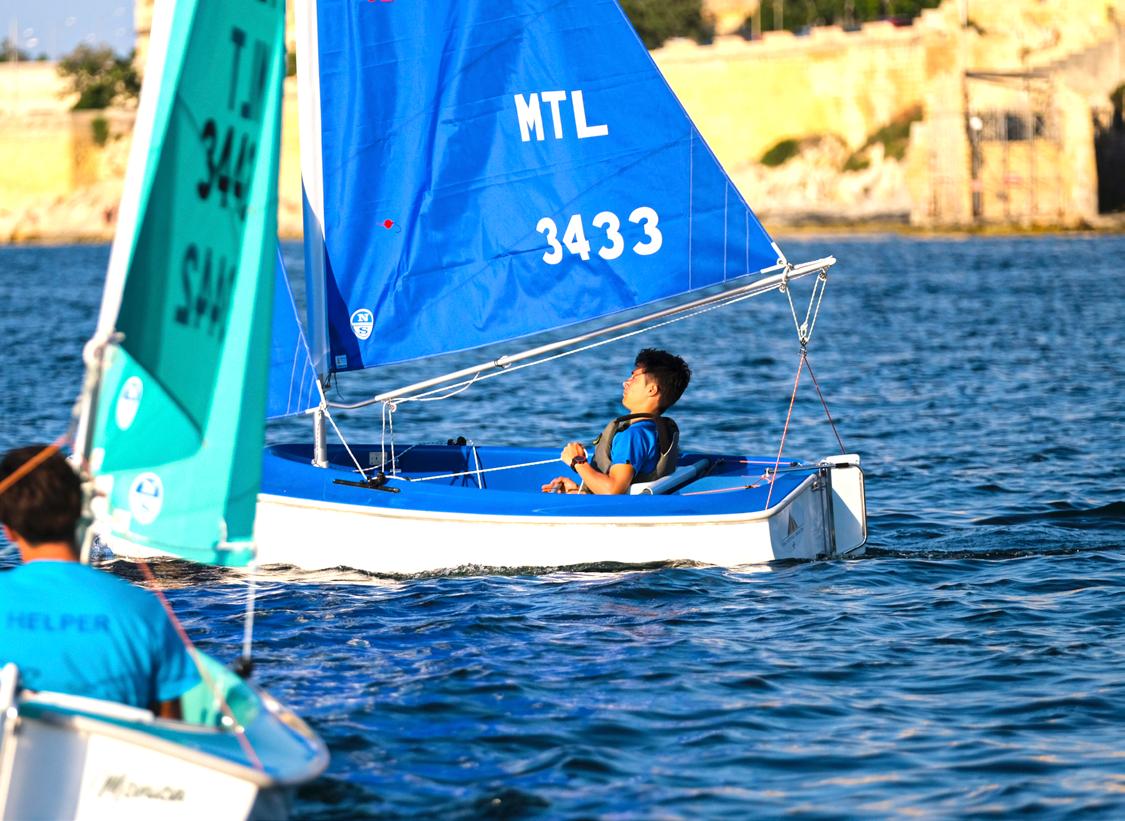
What boats are being used, and what adaptations do they have? Can you tell us more about them?
The boats are identical to Hansa 303, which can be used as single-handed or doublehanded boats. It is the most widespread ›
Paralympic boat and is popular in neighbouring countries, especially Italy. The boats were designed and built in Australia and can be adapted to all levels of physical disability. The boats that we have purchased are adaptable for single and double-handed use.


How many boats do we have lying around Malta, and where are they kept?
We currently have three boats, with plans for a fourth to join the fleet, hopefully later this year. Malta Young Sailors Club and Birzebbugia Sailing Club have a boat each, whilst Vikings Sailing Club and Royal Malta Yacht Club currently share a boat.
Now we know that there are different classes
do you have any thoughts on introducing these?
We intend to follow the advice of World Sailing and our neighbouring sailing countries and stick to the Hansa Class. We feel that the ease with which these boats are sailed, the low position of the sailor, and the vast numbers testify to this class's suitability. We know that four boats make a class at a regatta, and we hope our next step is to have a Paralympic class at our local regattas.
We are part of an international community of sailors, and I heard you already went to an event to get a feel for it. What did you learn?
I first attended a regional regatta in Syracuse, following which I attended the World Championships in Palermo and, finally, the Paralympic Development Programme in Oman.
Who's your international contact, and how well do you communicate?
Till recently, my contact was Massimo Dighe, and I have not communicated with his replacement yet. However, Catherine Duncan, Rob Holden, and Bernard Destrube have all been accommodated.
Who can try these boats out, who can join and how?

I hope more people come and try them out and take up sailing as their preferred sport. We are coordinating with the Malta Paralympic Committee to communicate this possibility to them and other potential athletes.
Your line of thought is always "one step at a time". You made the first bold move by bringing the boats to Malta. What's your vision, and are the clubs receptive?
My vision is to have many people experience the freedom and liberty that only sailing can give. I want everyone to enjoy our sport. Anyone who wants to take the sport seriously and compete will find us four behind them to help them achieve their full potential.
"My vision is to have many people experience the freedom and liberty that only sailing can give."
Yachting Malta CEO MIchael Mifsud and ex-chairman John Huber presenting the boats
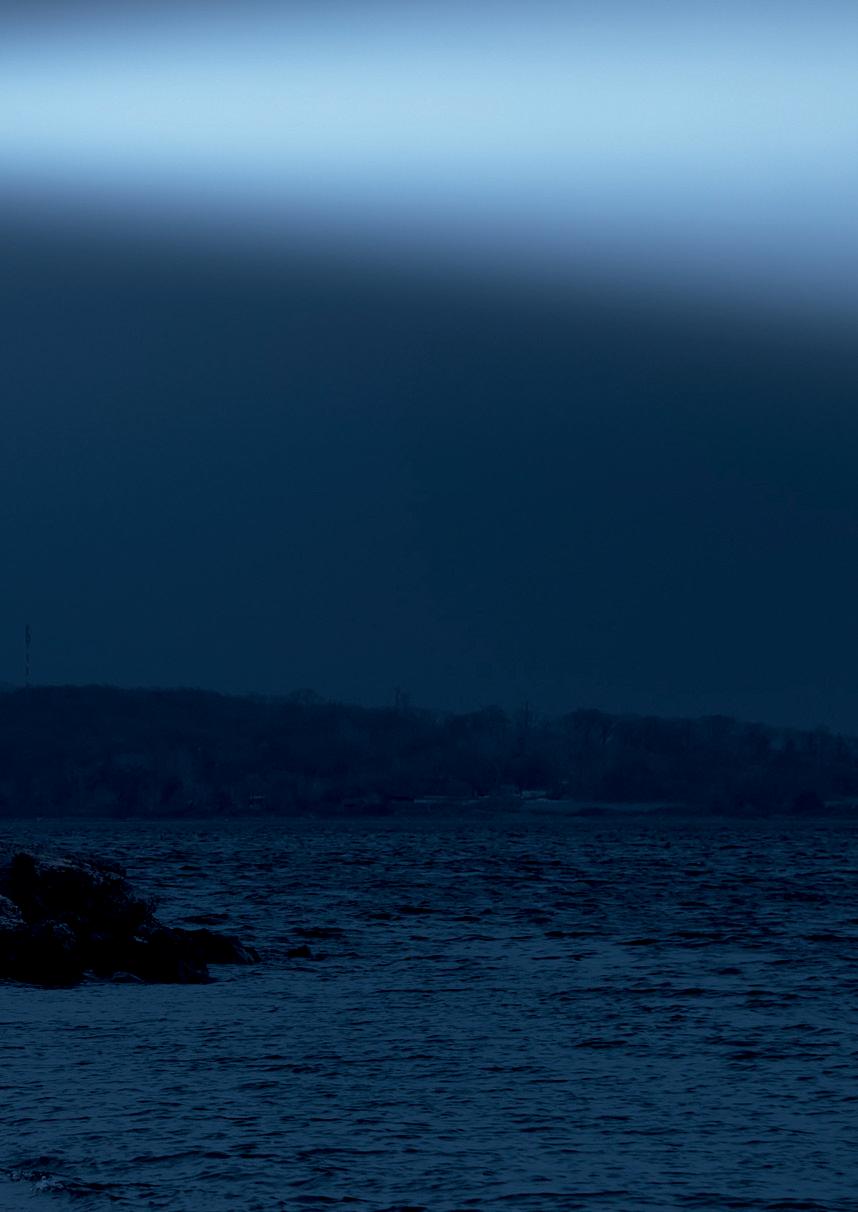
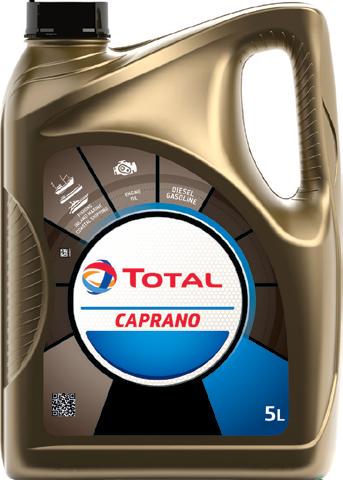







Last September 6–11, Europe's largest on-water yacht exhibition returned, and we've picked the top of the crop from the 2022 Cannes Yachting Festival. There were almost 400 motorboats on display, including 135 world premieres, more than anyone could see in the show's five days. Skipper selected six vessels worthy of your attention, ranging from a 32foot Italian dayboat with a marble deck to a 100-foot superyacht.

At the show, Fairline displayed an improved Squadron 68, but the new Phantom 65 was the more remarkable and radical global debut. As Fairline's first-ever sports bridge yacht, it took the exterior design of the award-winning Targa 65 and added a redesigned window line and a low-slung fly deck, providing tri-deck flexibility alongside a breathtakingly streamlined sports cruiser aesthetic. With its long, blade-like hull windows and a deep-set flybridge that flows softly into the curved roof mouldings and radar arch as you move aft of the boat's centerline, it's a stylistic success.
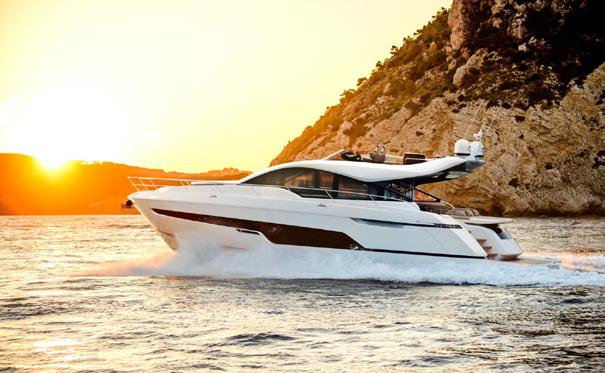
LOA: 16.65m
Be A m: 5.10m e ngines: 2 x 725hp VOLVO ips 950
TOp speed: 39 knOT s sTA r T ing: pOA
The Fiart P54 name may be unfamiliar an Italian abbreviation for factories for applying thermohardening resins but the company was an early adopter of the new-fangled boatbuilding material, having been founded in 1960. The company's headquarters are in Baia, near Naples. The new Fiart P54, designed inside and out by Stephano Pastrovich, is a true headturner in a competitive segment, with dramatic aesthetics, plenty of horsepower, and a quick turn of speed. When at anchor, outside seating is organised in a secure central space for use when underway and a lower lounging area aft.
LOA: 26.14m
Be A m: 6.22m e ngines: Twin 1, 800hp2000hp m A n V12
TOp speed: 29 knOT s sTA r T ing: €5,590,000 (ex. VAT)



The Ferretti 860 is a superbly opulent tri-deck motor yacht with an internal layout that ideally leads to eight-person crew cruising.
On the main deck, floor-to-ceiling windows and cutaway bulwarks provide excellent views from the saloon and dining room, separated from the semi-raised pilothouse by the fully-enclosed
galley, allowing the crew to conduct their duties without disturbing the day spaces.
A spiral staircase to starboard leads down to the midship owner's cabin, forward VIP, and two additional guest cabins provide plenty of space and privacy. The forepeak is home to two crew cabins with twin bunk beds and ensuites. ›
LOA: 16.58m
Be A m: 4.m Fue L: 2,000 L i T res e ngines: 2 x VOLVO ips 650 – 800 sTA r T ing: €1,017,450 (ex. VAT)
The potential of the new Pardo GT52 "crossover" design to give a more pleasant sailing experience due to the natural continuity of its internal and exterior spaces is a critical component of its design. It has three aft windows that you may open upwards to connect the internal saloon to the aft cockpit. The cockpit is nicely utilised with a pair of aft-facing seats connecting to the alfresco dining table without blocking the walkaround deck. Furthermore, the new boat's architecture allows you to customise the interior layout to your specifications. For example, if you select the galley-up configuration, you can specify a living room or an additional bed cabin on the port side of the lower deck for six-berth cruising. On the other hand, choose the galley-down option for a more oversized main deck dinette and a betterequipped kitchen with lots of workspace for enhanced off-season usability.
LOA: 23.25m
Be A m: 5.75m e ngines: Twin 1,550hp Or 1,800hp m A n V12 TOp speed: 37 knOT s priCe: pOA
This new Riva 76 Bahamas Super, based on the Perseo 76 hull, has a classic throwback appearance coupled with some rather cuttingedge thinking in the cleverest of ways.
Riva's cool powered hard top, which shields the helm and cockpit but swings across to cover the foredeck seating in a single seamless movement, was initially revealed to a breathless audience on the Riva 88 Florida.
It gets another chance here.
That may be reason enough to consider the new Riva 76 Bahamas Super, but there's more.

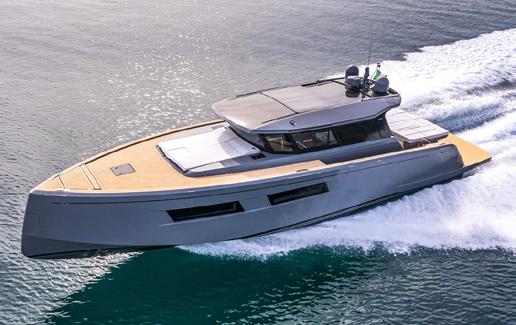
Two engine options, ranging from 1,550 to 1,800 horsepower, are installed beneath the cockpit and drive typical straight prop shafts via V-drive transmissions for a top speed of 37 knots. With the 1,550s, it's around 32 knots.

The new Sanlorenzo SP110 was the show's highlight at the 2022 Cannes Yachting Festival, docked stern to the quay.


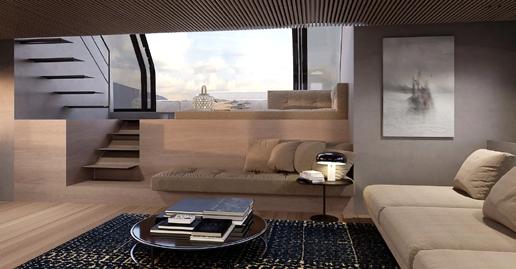
Sanlorenzo's sub-brand Bluegame influenced the lower saloon, which leads down from the cockpit. However, this takes it a step further by opening the area after the main deck's end
to create an eye-catching two-story atrium that shows everyone who may be gazing in, i.e. everyone, that your boat is finer than theirs and maybe faster as well.
The Sanlorenzo SP110 can reach 40 knots thanks to three MAN V12 engines, jet drives, and a lightweight carbon-fibre structure.
The importation of goods into the EU Community generally necessitates the immediate payment of VAT and import duties before the customs authorities can release those goods into free circulation. The VAT paid to the customs authorities by a taxable person is not foregone as it can be claimed back through the periodic VAT returns to the extent that those goods form part of an economic activity which gives rise to a right of deduction.
On the other hand, where a person imports high-value assets for private use, such as a vessel or aircraft, VAT is, in principle, payable immediately at customs, which, unless paid, may create a limitation on the freedom of movement of the vessel or aircraft within the EU Community.
To the extent that the relevant criteria are satisfied, an importation followed by a leasing agreement would benefit the importer from a deferment of the import VAT. Naturally, this
will be beneficial from a cash flow perspective since there will not be a lag between the immediate payment and the recovery of the VAT via the Malta VAT return.

Malta offers two practical leasing arrangements. One is based on the effective “use and enjoyment” clause laid down in Article 59a of Council Directive 2006/112/ EC, whilst the other is based on the principles enshrined in the landmark case of the European Court of Justice (ECJ), the Weald Leasing Case C-103/09.
According to the ECJ, adopting an asset leasing structure involving the deferment of VAT over the useful life of an asset does not generate any tax advantages.
It is not considered abusive, if the contractual terms of those transactions, particularly those concerned with setting the levels of lease payments, correspond to arms-length terms.

The term “VAT Paid” is not defined in the VAT legislation; however, it defines the status of an asset which allows it to roam freely within the EU Community. An owner of an asset can prove such status through documentation such as a VAT Paid Certificate, tax invoice/fiscal receipt, Customs import documents, confirmation of payment to the Tax Authorities etc.
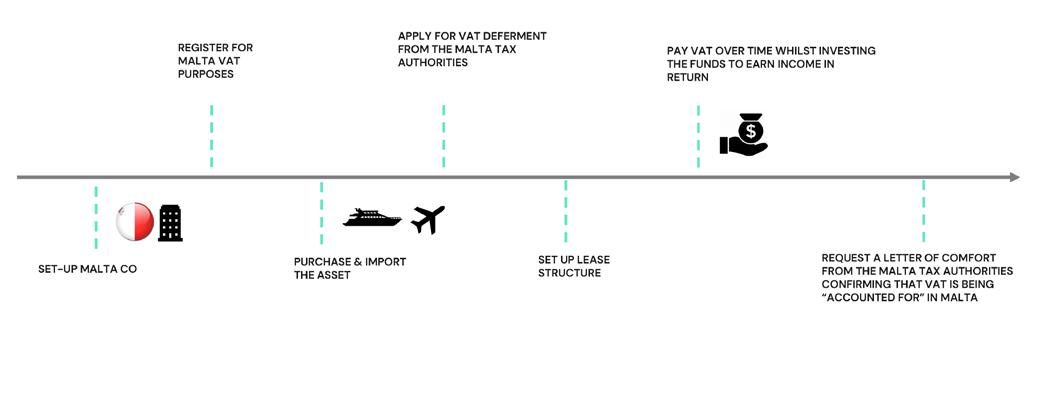
The VAT Paid status is easily lost if the asset is exported outside the EU Community and does not return within 36 months. Otherwise, the asset is exported and reimported by someone other than the exporter.
As mentioned above, in certain member states, the VAT Paid status is typically supported by the VAT Paid Certificate, which is a document issued by the authorities of a member state which certifies that VAT on a particular asset has been paid.
Please note that the above article is for information purposes only and does not constitute or should be regarded as constituting legal advice. Zampa Debattista is an advisory firm with strong values of integrity and excellence, which help us maintain high levels of customer satisfaction.
We have built our reputation by offering specialised services in indirect taxation and financial reporting. Still, we also offer services in the direct taxation and assurance areas through dedicated teams. Get in touch at info@zampadebattista.com.
There's nothing like setting sail during the cooler days when the nights grow a little longer and summer is another six months away. However, while sailing in summer is the most popular option, just because summer has ended doesn't mean you must wait before you go to the water. Yet again, the autumn and winter sailing locations are just as excellent as the ones you can visit in the summer.
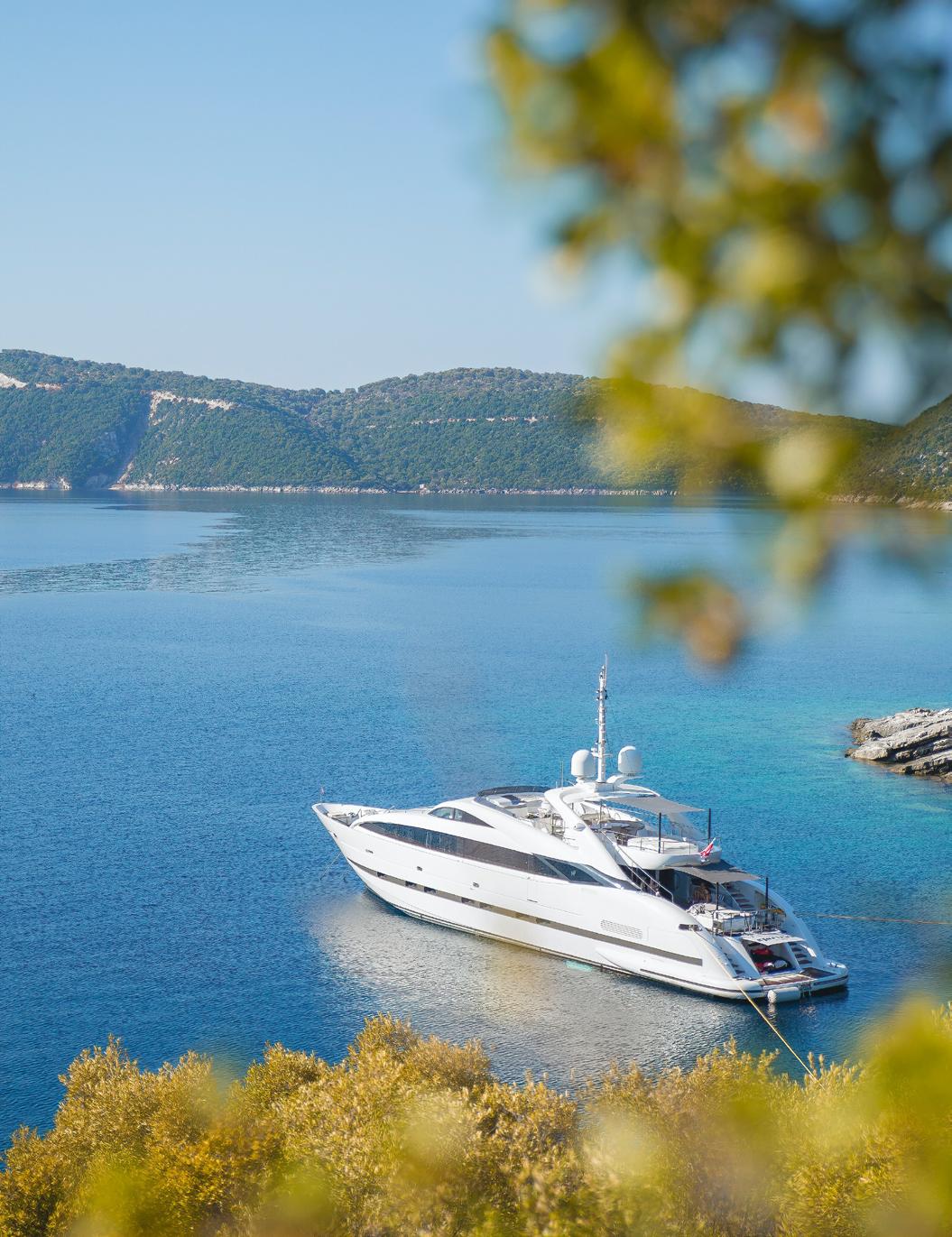
If Thailand is on your bucket list, then there's no time you should waste: autumn and winter are the perfect times to see Thailand out of season. Surrounded by gorgeous crystal seas and with a variety of water activities to take part in, sailing to Thailand in the autumn will give you some beautiful, lasting memories of a side of the island that is rarely seen outside of boat excursions.
From snorkelling with nudibranchs to scuba diving and bird watching, there's no shortage of experiences you can undertake in Thailand, provided you can tear yourself away from the gorgeous sandy beaches and the warm water.

Climate and weather
Phuket's year-round cruising destination is best for novice sailors. Gentle tides, warm winds, and a sandy seabed. Although north-easterly winds promise dry spells and mild breezes, sunny days will become hot by April. Serious sailors prefer the wetter season, which runs from May through October. South-westerly monsoons bring Force 6 winds, wet storms, and extreme temperatures. However, there is always safe sailing in Phang Nga Bay down to the Phi Phi Islands.
Coral Island, a short sail south of Phuket, accomplishes precisely what it claims. Anchor outside the reef to snorkel with nudibranchs and lionfish. Are you looking for solitude? Coral Island is home to only one opulent resort; once day-trippers return to Phuket, the island's three. beaches are all yours.
Anchor off the Similan Islands for the ultimate Treasure Island experience. The 11-island archipelago is located approximately 100 kilometres’ northeast of Phuket and is protected by a national park. The islands are
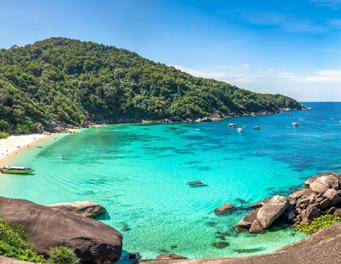
accessible from November to April, although sailing experience or a skipper is required. The Similan Islands' Caribbean allure will appeal to scuba divers, bird watchers, and beachgoers. The action focuses on turtle snorkelling, cliff jumping and aggravating business friends on Instagram.
Chillva Night Market in Phuket Old Town is a great place to shop for unusual souvenirs in the cool night air. The ambience at the market is boho bling, with street food, handmade jewellery, fried insects, silk textiles, and cold beer pushed from recycled cargo containers.

Royal Phuket Marina is, by far, Thailand's most popular sailing destination.
The harbour is home to restaurants, co-working spaces, regular regattas, and many yachts ranging from single-day explorers to 35m-long superyachts. So, it's no surprise that the marina has received the Yacht Harbour Association's renowned 5 Gold Anchor Award. Do you require a mooring? Call VHF channel 79 or reserve one of the 100 available spots online. In addition, because Phuket is Thailand's yacht-charter capital, dozens of tiny marinas, restaurant tie-up docks, and yacht-friendly islets nearby, including Ao Po Grand Marina, which leads directly onto the northern islands of Phang Nga Bay, and the safe anchorage of Ao Chalong on Phuket's southern tip.
The King's Cup Regatta in December in Phuket is the most prestigious in Southeast Asia. Up to 100 large boats are expected to compete in a week of fast sailing around Phuket's southernmost islands. Koh Lon, for example, is a hidden beachy beauty where swings drape from coconut trees. ›

With mild temperatures and clear waters as far as the eye can see, sailing to Bermuda is another option if you prefer subtropical climates and warmth. The cruise season in Bermuda is mainly between April and November, so if you're looking for seclusion and have a while to spend exploring Bermuda's 138 scattered islands, we recommend going slightly outside of the season or near the end of it to make the most of the natural beauty of Bermuda.
While you will likely visit during hurricane season, always practice caution and check the weather before you go. Also, remember that Bermuda is not for beginner sailors: the sudden shift of weather phenomena can make it a little challenging to manoeuvre, so always stick to areas you feel safe in.

During winter and autumn, the climate is subtropical and pleasant. However, it can get hot, especially with heavy humidity, from late May through October. The hottest months are May through mid-October when temperatures range from 23°C to 30°C. From July to midOctober, humidity levels are regularly much above 85%. Despite its latitude, longitude, and location in the north Caribbean, Bermuda has no frost, snow, or ice. But why is that? Because the Gulf Stream's warm waters travel close to Bermuda. Temperatures are mild from November through March. Lows will be around 15/17 °C, and highs will be about 20 °C. There may be days with good weather. However, there are typically 11/13 days every month with rain and wind.
The Gulf Stream generally moderates Bermuda's ocean breezes. However, when south breezes prevail, humidity rises and thunderstorms become more common. July and August have the highest humidity levels. Thus, this is the worst season to visit. Temperatures rarely fall below 15°C or rise over 32°C. The lowest recorded air temperature was 6.45°C. During the winter, water temperatures are often the same as air temperatures, ranging from around 19°C in January to 23.8°C till late spring. Furthermore, warm air constantly rising into the atmosphere over the equator drops back to Earth as warm and dry air around approximately 30° north and south latitude
From where are you sailing?
There are numerous sites from which to set sail to Bermuda. The most popular are Miami, Florida and the United States East Coast, the Dominican Republic, the Azores, Cuba, and Europe. The ocean passage can be difficult, but if you plan ahead of time and are well-prepared, you will have nothing to fear. Remember that your sailboat must be seaworthy and capable of withstanding the North Atlantic Ocean's winds and currents. The Gulf Stream is one of the most challenging problems travelling to Bermuda. The North Atlantic Current, along with its northern extension, is a powerful and primarily warm Atlantic Ocean current that originates in the Gulf of Mexico. It leaves the Florida Strait and travels along the eastern coasts of the United States and Newfoundland before crossing the Atlantic Ocean. Thus, when cruising or sailing, you must constantly be prepared for any face it may present and always plan a safe passage.
Unlike its Caribbean neighbours, Bermuda is less prone to hurricanes, and the weather is mild all year. However, you should check the weather prediction between late August and October, as this is hurricane season in Bermuda.
The Gulf Stream is a significant Atlantic Ocean current that originates in the Gulf of Mexico. It enters the Atlantic Ocean at the southern tip of Florida, turns north, and speeds up the eastern coast of the United States to Newfoundland. It comprises a vast network of currents reaching up to 4 knots, occasionally generating circular currents and violent winds. In general, the Gulf Stream is not kind to seafarers. In short, you should appreciate her power and consider how to use it. As with other waters with current, it is best to avoid when the wind is blowing in the opposite direction. This is especially true for the Gulf Stream, where an opposite wind can generate dangerously high and sharp waves.
A thorough rigging check is required before departure. Your operational rig must be thoroughly inspected and repaired as needed. Furthermore, on the return of your transatlantic journey, you will most likely spend extended
days on one tack. Chafe on sheets and halyards is therefore very likely. A professional rigging inspection is worth the money, but if you do it yourself, make sure you check everything from stem to stern. Examine the mast, boom, and spreaders for damage.
Furthermore, inspect any spots where everything connects, exits, or is attached. The surfaces must be smooth and free of fractures. Every fastener must be snug and secure. Finally, double-check that all split pins and keyrings are taped up. Make sure you sail outside of hurricane and winter gale seasons. Remember that the North Atlantic is not an accessible location to sail with a small sailboat. Sailing on the "snowbird" trip south at the end of summer is dangerous. This is because there are no "months" break between the end of the hurricane season and the start of the gale season. Thus, many sailors make this passage around November.
The best thing is to leave in mid-October and watch for a helpful weather window. Then, be ready to jump as soon as you get a gap that looks appropriate for you.
Make sure to pick your best time, go fast when needed, and be prepared for very rough weather if things take an unexpected turn in the forecast. Because meteorological phenomena are more robust offshore, self-reliance is not an option but a requirement, which means you must deal with any situations and obstacles that may arise. And being out of sight of land might trigger terror and a rare escape.
Although the Bermuda triangle is more famous than Bermuda itself, many sailors prefer this North Atlantic destination. Pink-sand beaches, breathtaking scenery, and a fusion of British and American culture thrive there. Bermuda, as one of the top sailing destinations in the world, is best visited between October and March.

However, many sailors set sail in April, May, and even June. Remember that the core of hurricane season, which spans from June to November, has a greater sailing danger. Thus, the months of October through March typically have the calmest seas for the trip. ›

Sparsely populated and majestic. If you seek solitude on your winter sailing journey, Patagonia should be at the top of your list. It is packed with sailing history and has some of the most amazing untouched landscapes in the world—more than enough reason to pack your itinerary with sightseeing around Patagonia. With rain forms, snowy mountains, and volcanoes, you can see an entire spectrum of nature in just a few square km of water and wilderness. It's best to visit at the beginning of October. However, we recommend contacting a Chilean yacht authority to determine the ideal time to visit and what experiences those agents
recommend. With three different zones to choose from, Patagonia can be overwhelming for a beginner sailor, so getting advice from people who are experienced in the area is a big help!
The weather in Chile is notoriously variable, shifting significantly depending on latitude. The country's north is dry and scorching, but the Humboldt current cools coastal parts. Meanwhile, the south is typically damp and windy but can still be unpredictable. Patagonia's best months for ocean sailing are October and March.
The weather is slightly more predictable and calmer during this time. However, if you want to travel during the peak months of December through February, we recommend booking your yacht well in advance, as there are very few marinas in Patagonia.


Despite being some of the most remote waterways on the planet, most of Patagonia's protected channels and fjords are accessible. These canals are unfrozen during the summer
months. You will, however, face ice as you reach the glaciers. The waterways are extremely deep, measuring 100m or more. Despite the deep canals, most marinas aren't appropriate for yachts longer than 15-25m due to Patagonia's underdeveloped yachting sector.
Furthermore, the Patagonian fjords offer a haven of undiscovered anchorages. However, these exposed regions are prone to violent storms, so look for wooded areas with gentler breezes. These remote areas are ideal for sailors looking for a haven from the unpredictable weather in the channels.
Things

Patagonia is enormous, covering approximately 650,000 square kilometres of harsh terrain, gorgeous vegetation, and unique species.
There is much to see and do in one of the world's last remaining unspoiled wildernesses. In Patagonia, you might easily spend three or four weeks’ ocean sailing. With so many options, it is generally advisable to work with an agent to plan your schedule. For example, a southbound route through Patagonia's southernmost tip may start in Puerto Natales and terminate in Puerto Williams. Ships can see whales, Glacier Alley's magnificent tidewater glaciers, and around the enormous Cape Horn along the journey.
You can exit and stroll, ride, or kayak across this spectacular region during your journey.
Here's a different one on our list: Alaska, the land of snow, ice, and forever sun. Although you might be hesitant to go somewhere renowned for the cold, we're here to tell you that there's absolutely no reason not to visit Alaska, provided you can adjust to the uniqueness of the experience. With shorter sailing days and weather that changes rapidly, Alaska is one of those experiences that requires you to be a little bit more hands-on than just a pleasure cruise. However, if you're in the market to see some fantastic landscapes and are interested in cruising past mountains, we recommend Alaska without a shadow of a doubt. So, keep an eye out for whales, stock up on supplies (and warm clothing!), and let yourself enjoy the chilling landscapes of Alaska from a position where very few get to see them.
→ Bring fishing and crabbing gear. It's some of the best salmon, halibut, and Dungeness crab fishing in the world. (You'll want to get your fishing licenses online beforehand. For Alaska waters, go to adfg.alaska.gov and select fishing>Licenses & Permits. For Canadian waters, go to pac.dfo-mpo.gc.ca and select Fisheries>Recreational Fishing>British Columbia Recreational Fishing.)

→ Bring foulies and warm clothes. The weather can be wet, and temperatures get mighty chilly as you approach glaciers.
→ Make a point of visiting the small towns along the way. They are
exciting and welcoming. You'll learn a lot about local history and indigenous people, and you'll get a real taste of the rugged folks who choose to live in this remote wilderness.
→ Be aware of the many large cruise ships in the area. Not only are they intimidating, but their wakes also are large and sometimes bounce off narrow passages, and they can roll your boat for a surprisingly long time. Keep items carefully stowed as if going to sea so you'll be ready when you encounter them.
→ Don't count on much sailing. Winds are often non-existent, light from the north, or strong south-easterly with uncomfortable seas.
→ If possible, anchor far from shore and bring bug spray. The bugs aren't usually nasty, but the mosquitoes are Alaska-sized.


→ You'll want some bear spray, sold all along the route and is very effective for defusing an aggressive bear encounter. It's what the Alaska guides use, plus it's legal to carry through Canada. (Handguns are not.)
→ Carry a lot of anchor rode and be prepared to anchor in many deep places. A reel of a small line helps add a stern tie to a tree on the beach, a common anchoring practice in deep harbours. Some of the most beautiful anchorages are 15 to 30m deep.
→ You'll encounter many whales. The laws say not to bring your boat within 90m (100m in Canada) and more in some areas, and you'll get a much longer show if you watch from a distance and don't disturb the animals.

Most yacht enthusiasts have grown up with a deep love for the ocean and all the secrets it contains, and as they've moved into adulthood, that affection for the sea hasn't waned.
Some of those owners move into private expeditions. Private expeditions, or explorations, take yacht owners to the world's remotest corners and help scientists research areas inhospitable to human life—either in the arctic, underwater or in other areas hard to reach and challenging to find funding for. Explorer yachts are built to be big and to last, and there's been a significant increase in the number of explorer yachts undertaking missions worldwide.
Here are five of the most interesting private expeditions of recent years.
Known as the world's deepest shipwreck, the U.S.S. Samuel B. Roberts was discovered earlier this year deep amid the Pacific Ocean by Victor Vescovo and the team behind EYOS Expeditions. The shipwreck was broken into two pieces and rested 6,895m below the surface. Using sidescan sonar and historical records, the discovery of Samuel B. Roberts has advanced deep ocean technology and research significantly.
According to Vescovo, who documented the dive on his Twitter feed, the team discovered a triple-tube torpedo rack belonging to Roberts on 18 June. Vescovo, piloting his submersible, discovered the rest of the ship four days later. Unfortunately, Vescovo noted, "her bow hit the seafloor with some force, causing some buckling. Her stern also separated about 5 metres on impact, but the whole wreck was together."


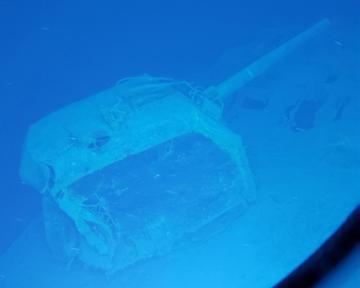

One of the most significant challenges for marine scientists is gaining access to the sea to carry out their work – work fundamental to the future health of the oceans and the entire planet. The deep ocean—below 200 metres—is our largest and most vital ecosystem, yet we don't fully understand how it functions or how healthy it is.
The Yachts for Science initiative, launched at the Ocean Talks event at the Royal Geographical Society in London in June 2021, is a collaboration between BOAT International, Nekton Mission, and yacht owner and philanthropist Lilly Barclay. The initiative was launched to bring marine scientists looking for yachts into contact with boat owners, decisionmakers, brokers, designers, and builders who could help take them to where they needed to go.
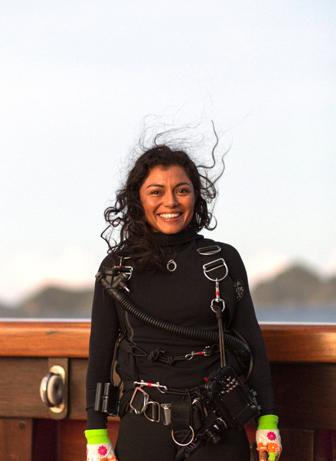
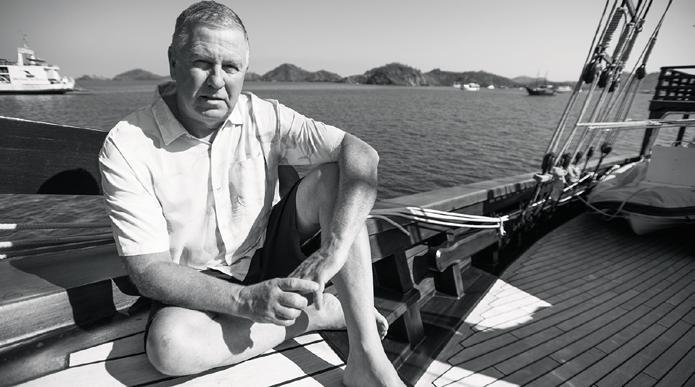
The call was met with great enthusiasm, and the practical results of this partnership are already coming to fruition. Under the leadership of leading scientist Erika Gress, the first expedition took place earlier that year in the Raja Ampat region of Indonesia. The mission: to study black coral for two weeks on board.
Dunia Baru (Malay for "new world") is a seven–cabin, 51–metre luxury Indonesian phinisi owned by American Mark Robba. Indonesia's Dunia Baru is no stranger to giving back to the islands of Indonesia and their inhabitants. In 2018, after completing a luxury charter around the Komodo region, Robba and his crew sailed the superyacht to Lombok after a colossal earthquake devastated the island. They distributed food and other relief aid to the neediest villages. The following year, the yacht carried a team of nine medical staff, made up of four specialists and five GPs, to the most remote villages of Raja Ampat to administer free middle–ear infectious disease screenings. ›

Constantly looking for yachts to support their research, the Manta Trust project has been researching manta rays in the Maldives over six project sites. Yacht owners who offer berths to the project aid scientists in tracking, studying, and ultimately supporting the ecosystem of the manta rays. With massive ocean areas left unstudied, projects run by organisations such as Manta Trust help safeguard the environment that makes up 90% of our world and give new insight into what lives in the oceans.
Active in about 16 countries worldwide, promoting the conservation of manta and devil rays and their habitat through research, awareness and education. Three of its current significant operations are the Global Mobulid ID Project, which aims to provide a taxonomic, morphological, and genetic identification guide to manta and devil rays; the collection of data about ray landings in India, which will inform conservation management in that country; and the Indonesian Manta Project, which works to promote an appreciation of manta and devil rays among local people.


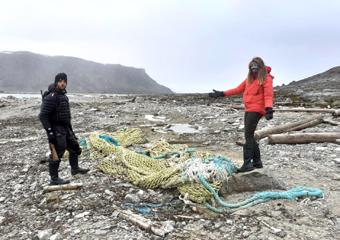

The Polarquest2021: Save the Arctic White expedition team set out on 31 July 2021 aboard the Italian flag steel cutter Best Explorer. The vessel was crewed by a diverse team of researchers, science communicators, and sailors, all carrying out valuable scientific investigations about the Arctic environment and the impact of human activity on its fragile ecosystems.
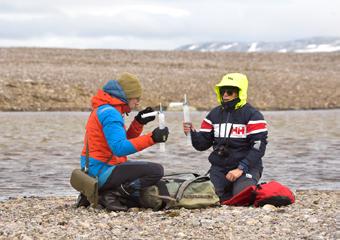
The expedition crossed the 80th parallel north into uncharted waters northeast of the Svalbard archipelago. The team carried out first-of-a-kind mapping by air and sea, giving testimony to the state of the Arctic environment in the northernmost regions of Svalbard.
In Lilliehöökfjord, they sampled environmental DNA (e-DNA) to measure the impact of climate change on biodiversity; the samples were analysed at ETH Zürich. At every station along the itinerary, they sampled greenhouse gases from the seawater and atmosphere. Drones were deployed to carry out highly detailed mapping in five locations in the North West and North East of Svalbard; data processing and analysis were carried out by the Geographical Laboratory of the European University of Rome (GREAL).
In the same regions, a multibeam sonar scan of the seafloor was carried out, collecting unprecedented data that will be valuable for navigation and environmental studies. They will be processed to make a case study by NORBIT Subsea, the University of Gdansk and GREAL. Furthermore, samples of driftwood and macroplastic on the shores of some of the remotest islands on the planet were collected for further study by ISMAR-CNR, La Spezia. ›

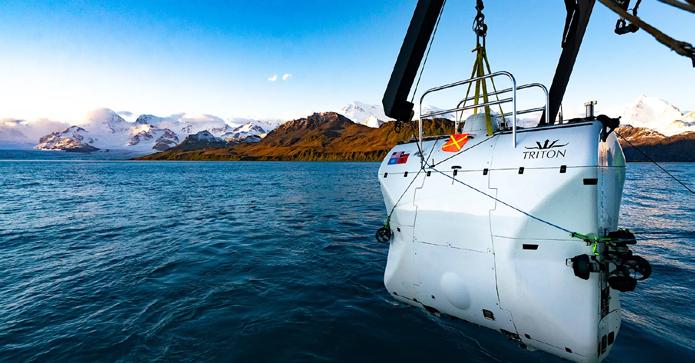

Limiting Factor, a Triton-built submersible that can reach the deepest points and was pressure tested for up to 14,000 metres below the surface, was recently credited with bringing back a rock from the bottom of the Mariana Trench, which has changed the understanding of how life evolves at the bottom of the ocean and opens further opportunities for deep sea research that have been previously unattainable due to a lack of technology capable of diving to the levels required.

It started with Victor Vescovo, a 53-year-old private equity investor and retired naval officer. He was "a man with a plan" when John Ramsay, chief technology officer at Triton Submarines and Limiting Factor designer, first met him in 2014. However, his plan – to become the first person to dive to the deepest points of the world's oceans in a submersible that did not exist – was a "bit too serious," Ramsay recalls. "He wanted something just for one person to get him to the bottom of the Five Deeps." And Vescovo was not fussed with frills. "He didn't want all the specialist requirements of a submarine," Ramsay says.
The Five Deeps expedition set new records on each dive, as well as undertaking extracurricular dives on the wreck of the Titanic and the Tonga Trench. Triton has eyes on future projects, including the in-build threeperson submersible dedicated to the 182-metre research expedition vessel REV. "The plan is to take what we've learned and apply it to new projects," Ramsay says. "For the REV sub, we're going to use a lot of the tech that we used for Limiting Factor." Despite this, REV's submersible will be capable of diving to 2,300 metres, less than a quarter of Limiting Factor's capacity. "It does put into perspective how nuts the Limiting Factor is," Ramsay says.

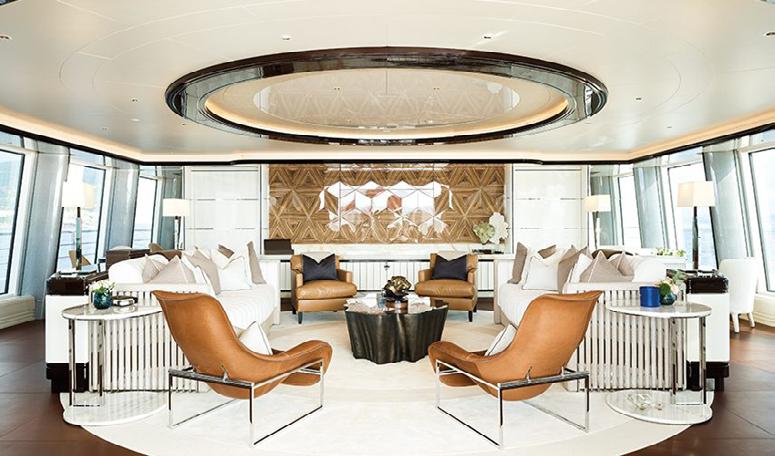
For several reasons, yacht design in 2022 has come so far from the early days that it’s nearly impossible to compare an old yacht with a new yacht. From environmental-friendly materials to sleek outlines and quirky shapes, the yachts we’re used to seeing at the marina are bold, beautiful, and brutal in their efficiency.
What we don’t see from the outside is the interiors. Yachts pose an exciting challenge for interior designers. The small space and the constraints of being at sea give a different facet to interior design that you don’t find working on houses.
Here are a few of our favourite trends from the previous year and ones we hope to see more of in the future. If you’re looking to redesign the interior of your yacht, these can give you a starting point on what to work on.
Winch Design is one of the top-tier interior design firms, and when you see their work, it’s easy to see why. With over thirty years of experience designing luxury superyacht and private jet interiors, Winch Design brings it all with every project it works on, such as
the excellent, gold-glossed interior of the Excellence.

By using sleek, blocky lines, ample, curved upholstery, and innovatively-shaped tables, Winch Design creates a living space that looks comfortable to live in but elegant enough to have guests over. Pair it with cream-coloured fabrics and gold accents, and you have a return to Art Deco that’ll glow when the sun hits it— and make your guests and you happy.

Yachts have limited space, so everything you place in the interior has to fulfil two functions: be usable and beautiful. Forget about flat sconces and hidden glow: lighting doesn’t need to be hidden, but it needs to be minimalist, and it needs to be lovely to look at, especially with how important it is to have good lighting. Not only does it set the mood and the tone for what you want your guests (and yourself!) to feel when you’re on board, it can create a focal point that ties together the room. Whether you opt for lighting-as-art or lighting-as-minimalist, we cannot overstate how important it is to have lighting that showcases your yacht at its best.

It might cost you a pretty penny to install, but there’s nothing better than settling in for a day on the water with the most glorious view of the sun on the waves. Innovations in glass design have come a long way, so you can even install privacy glass if wall-to-wall windows appeal to you but not the openness of the design. Regardless of what you pick, glass is a lovely accent to any yacht and one that we’ve seen get a significant boost in the last year or so, from the 77-metre glory of the Pi to the Artefact’s geometric viewing angles. If you make one change to your yacht, make it more glass.
Sticking to one material or texture for your interiors adds a certain cohesiveness to your space, especially with small living spaces. However, we suggest the opposite: go bold with mixed metals and multiple textures for a show-stopping interior that is sure to make an impact. Our favourite is working in natural textures such as stone, wood, and marble with sumptuous silks and velvets, but there’s a lot you can do with this to elevate your interior design. But, of course, you can’t go wrong with mixed materials.
The new Karnic S37x is a hardtop sports cruiser design based on a 10m hull. The new sports cruiser will be Karnic's new flagship yacht, with all the features that any boat owner could want. For example, this new model will offer three separate double cabins with ample storage cabinets and lockers, a spacious WC/shower, a bright and spacious salon, and a good-sized functional galley.


In addition, there is a wide choice of navigation equipment, engine options, and upholstery materials, with either walnut or white oak joinery to choose from. The prototype for this model is anticipated to be tested using twin
Key features include;
→ Twin outboard or twin sterndrive
→ Three double cabins with privacy door, natural illumination, ventilation portholes, own clothes cabinet and stand-up headroom
→ All composite roof with a panoramic sunroof, rear shadow extension, slim radar arch and a dedicated area for solar panel installation
→ Bow full-size sunbed with adjustable
backrests, concealed bimini, and own stereo, USB, pocket and drink holders
→ Unique styling character with LED hidden illumination


→ Optional generator and AC, bow deck sunbeds, and much more...
For more information, contact Skipper Marine Ltd. at [+356] 9939 2666, 2134 2054, info@skippermarine.com.mt or www.karniboats.com
The Xc 47 starts a new age of XCruising. The concept is based on years of experience and a desire to meet the needs of bluewater sailors.
"Xc 47 is an elegant high-performance cruiser for safe and comfortable ocean sailing. Tremendous focus has been placed on the design to make shorthanded sailing safe and easy", says Thomas Mielec, director of design and engineering at X-Yachts. "Many of our customers share a dream of heading off on a long cruise, often around the world. With this yacht, they will be ready and able to achieve this whenever the opportunity arises."

"The design process has been different this time", Thomas Mielec explains. "We have built a full-size model, a so-called mockup, that can be heeled up to 20 degrees. As far as I know, we are the only yard that has ever done that. This has given us a unique test platform, with the opportunity to test different design scenarios in real-life situations. In addition, being able to move around in a physical environment eliminated numerous lengthy discussions, as everyone could feel and sense right away
what the right solution should be. Not only under conditions as they are when the yacht is docked, but also how things work during sailing when the boat is heeled over."
The deep V-shaped bow, generous rocker, and higher stern overhang from prior Xc models offer comfortable seagoing characteristics. The Xc 47's aft includes a contemporary, bigger
stern section with a soft chine for enhanced performance and space in the aft cabins.
The Xc 47 has a vacuum-infused epoxy/eglass sandwich and steel frame. Carbon fibre reinforces high-load areas, making the yacht stronger without adding weight.
The XC-47 will be launched in early 2024, and the introduction price is €750,000, excl. VAT. Apart from the many well-known X-Yachts qualities, such as epoxy-infused hull, steel frame, and rod rigging, the new bluewater cruiser from X-Yachts, also includes a bow thruster, a large combi charger/inverter, carbon bowsprit, honey-comb floorboards, and other technical features, setting a new standard in the market.
For more information, contact Sailpower Ltd. at [+356] 7949 4500 or email info@sailpower.com.mt or visit sailpower.com.mt.

BMW is proud to announce the all-electric BMW i7, the latest addition to its model family. The flagship sedan is fully integrated into the BMW 7 Series line and shines a vivid spotlight on sustainability-led premium mobility at the pinnacle of the Bavarian manufacturer’s model portfolio.
The all-electric BMW i7 combines the best driving experience with an unparalleled digital experience, making it one of the most powerful BMW 7 Series models and an innovative trailblazer for sustainable high-luxury personal mobility.

The characteristic design elements of the twin round headlights and the BMW grille have been wholly reinterpreted to achieve a modern and distinctive look. Some unique design statements are the upper light elements made of exclusive crystal glass and the illuminated contour of the kidney grille.
The interior focuses on the innovative user experience created with new My Modes and the latest generation of the iDrive operating system. My Modes enable you to customise your driving characteristics and interior ambience precisely.
In addition to the BMW Curved Display, a new type of light and function strip on the instrument panel and doors provides a visual and haptic quality that is as modern as it is exclusive. The BMW Interaction Bar is part of the ambient lighting and features control buttons. The BMW i7 offers the best movie-watching experience you’ll ever have in a car.
As you drive along, the Theatre Screen moves out of the roof liner, and you can watch a 31-inch screen with an ultra-wide display format and 8K streaming resolution. So, you’ll never have to worry about being bored again!
For more info, call Muscat Motors Ltd on [+356] 2326 4583 or email info.bmw.mini@mml.mizzi.com.mt. Facebook.com/bmw.malta | Instagram.com/bmw.mt








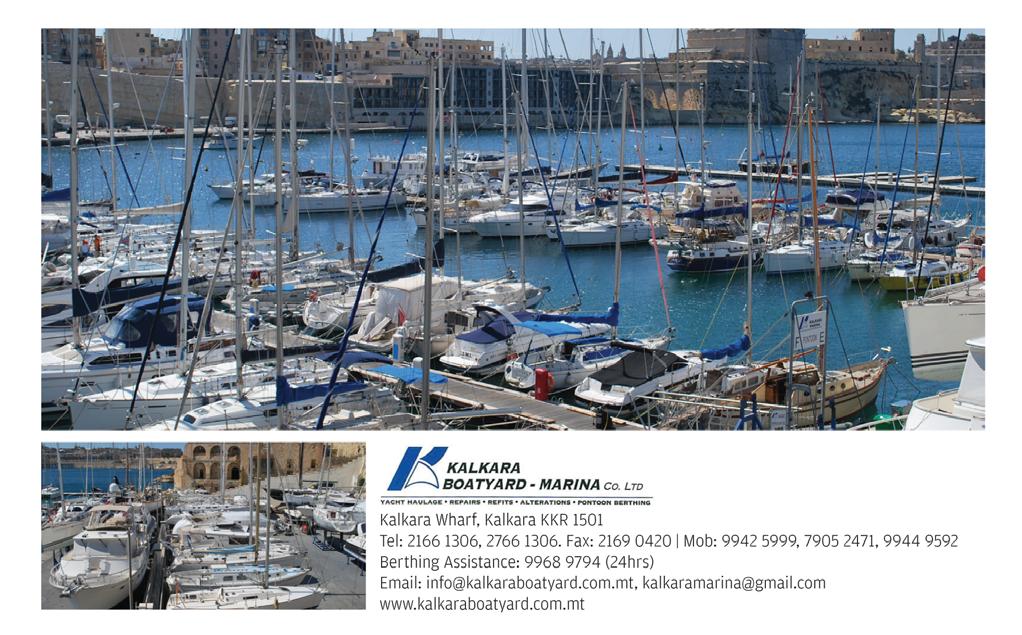


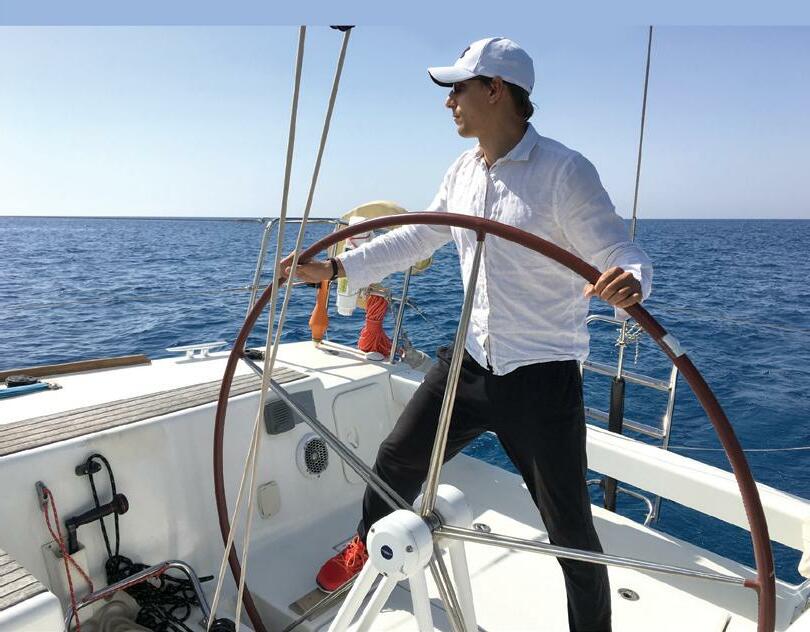

Honda has unveiled their new EU32i generator, which provides massive power in the most user-friendly package they have ever created. This newly developed, high-performance engine has arrived in Malta and is available for local customers at the Mrieħel car showroom of GasanZammit. The Honda EU32i generator is incredibly versatile, with high-spec features and an intelligent design that makes it easy to use, start, and carry.
With multiple features that will see this advanced machine dominate the 3kVA class generator market, Honda has combined an easy-to-use interface, a notably lighter body weight, and a high-output engine to deliver a generator that can be picked up and used to power multiple units simultaneously in professional and consumer environments.
The world’s first ‘high-output’ generator Typically found in cars and powerboats, Honda is the first to put a high-output engine into a portable, fuel-injected generator. Thus, an impressive 3,200 watts of power and the continuous performance that has been effective in the automotive and marine industries for years can now be relied upon
remotely, in blackouts and at professional events.
At 26.5kg, this latest model has come a long way from the previous EU30i, which was fixed to a trolley for transportation. Instead, you can pick up the EU32i and position it exactly where you need it. This ease of use extends to the start functionality, too, with the ability to start in just two steps. In addition, Honda has simplified the operating interface to get you going instantly.
Honda has proven that even engines with tremendous power can still be remarkably efficient. In addition, this high-performance engine delivers emissions that comply with several future EU regulations. The EU32i comes with an eco-throttle that allows the generator to adjust engine speed automatically to produce only the specific amount of power needed for the application. It’s also the first generator to include built-in fuel injection to optimise fuel for engine temperature and power needs to maximise burn and minimise emissions.
The generator can be paired with the IOS or Android smartphone dedicated app that uses Bluetooth connectivity to send critical service information and maintenance alerts to users. You can access the output power, check the fuel gauge to see if levels are running low, and even activate a remote stop if needed.
This powerful, lightweight generator allows professional photographers, construction workers, and event organisers to place their trust in a high-output power source that can transport themselves and run seamlessly from an app. This generator is also ideal for consumers seeking reliable, long-lasting power for their summerhouse or caravan or a highly dependable supply in case of a natural disaster or reoccurring blackouts—a generator designed for real-world use, like all Honda industrial products.
For further information regarding Honda’s newly launched EU32i generator, call GasanZammit in Mrieħel.












































































Since our launch in 2002, our blend of compelling content and superb photography with features on business, politics, yachting, tech and social issues continues to make each beautifully crafted magazine a collectors’ item. The years quickly established a reputation as a dynamic, high-end publishing house brought together by an emerging set of designers, photographers, stylists and writers tied by a search for creativity and authenticity. And as we celebrate our 20th anniversary, we’d be nothing without the support of all our advertisers with who we’ve been lucky enough to work with over the years.














































































































































bemags.com



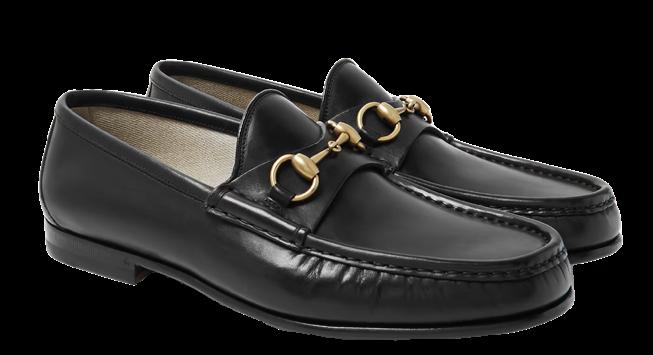
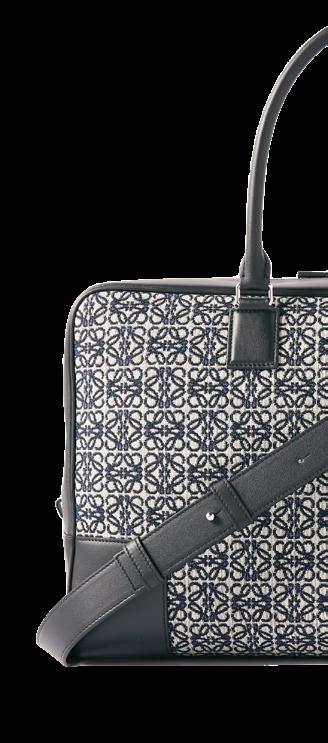

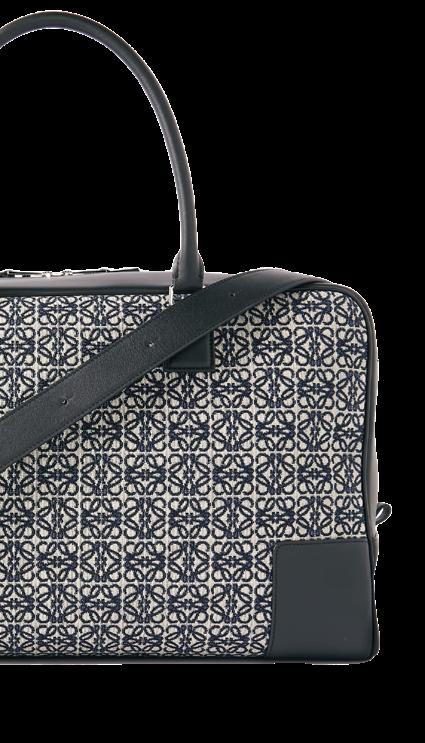
Logo-embroidered woven sweater € 1,390

MARNI Logo-print cotton-jersey hoodie € 605

Aviator-style tortoiseshell acetate sunglasses € 290



Slim-fit cotton and wool-blend suit trousers € 315
MR P. Lucien regenerated suede by Evolo® desert boots € 410

BALENCIAGA
Paris distressed logoembroidered canvas high-top sneakers € 750
Austrian-born, Malta-based Laura Peischl has always channelled her creativity through various projects. Endlessly inspired by strong women who adapt effortlessly to the many roles required of them, Laura came up with Eclectic, a jewellery boutique to showcase her favourite designers' one-of-a-kind pieces and bring original luxury jewellery and watch designer collections from around the world to Malta. Pairing an elevated aesthetic with a strong sense of personality, Laura has travelled extensively in Europe to handpick the designers she wanted to collaborate with and who would fit perfectly with her vision. From eye-catching necklaces to cocktail rings and bracelets, Laura has painstakingly hand-selected iconic and emblematic pieces to cherish forever.
So whether you're shopping for a new everyday look or choosing a gift to commemorate a special occasion, her beautiful boutique is a treasure trove guaranteed to delight.
Among the prestigious names she represents are luxury watches from the Berlin company Askania. Since it was first founded over 100 years ago, the company has always had a close connection to aviation and timekeeping.
Combining a high level of innovation and reliable technology, it quickly established itself as one of the most important German companies for aviation instruments, especially in the early days, when most aircraft were equipped with Askania onboard instruments,
which proved to be reliable in every situation and at any time, day or night.
Furthermore, the onboard and pilot watches helped aviation pioneers achieve their record flights and safely bring the first civilian passengers to their destinations.
Fully maintaining tradition, today's production of Askania timekeepers perfectly embodies the past values responsible for its legendary success: This Berlin-based watchmaker pays homage to the city's history with watch lines inspired by pilot's watches from the 1930s.
Take any recorded flight from the first four decades of the 20th century or any Lufthansa aircraft; chances are that the pilot was wearing an Askania
watch or that the onboard instruments came from Askania. These timeless pieces have distinguished themselves as the best toptier watchmakers today by demonstrating exquisite craftsmanship, incomparable aesthetic sensibility, and a passion for pushing boundaries.
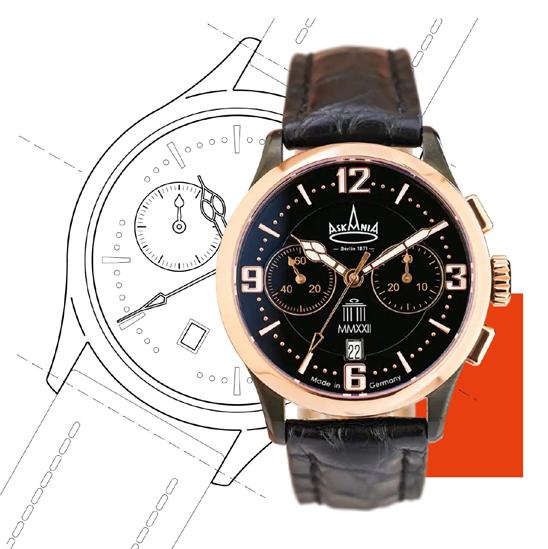
For an appointment, don't hesitate to get in touch with Laura at [+356] 99 97 95 96


Our work ranges from branding and identity to products and packaging, advertising and communications.
